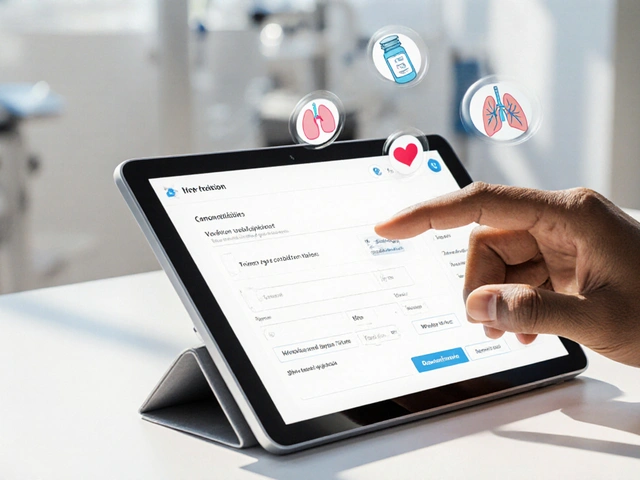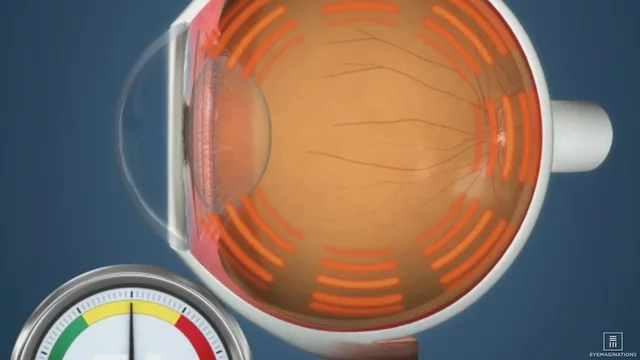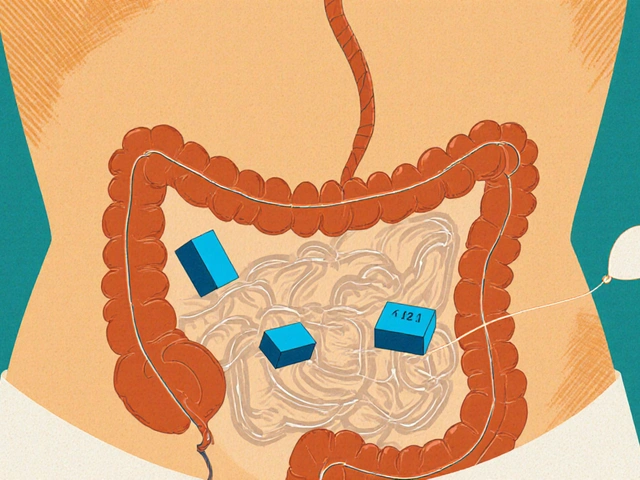Every year, over 5.8 billion prescription drug packages move through the U.S. supply chain. Most reach patients safely. But for every one that’s fake, the risk isn’t just wasted money-it’s a life at stake. Counterfeit drugs don’t just lack active ingredients; they can contain rat poison, battery acid, or lethal doses of fentanyl. The system keeping them out isn’t magic. It’s a decade-long, tech-driven effort called the Drug Supply Chain Security Act (DSCSA).
What the DSCSA Actually Does
Passed in 2013, the DSCSA didn’t just add another rule. It rebuilt the entire foundation of how drugs move from factory to pharmacy. Before DSCSA, a pill could change hands dozens of times with nothing more than a paper invoice. No one knew if it was real. No one could trace it back. Today, every prescription bottle, blister pack, or vial carries a unique digital fingerprint. That fingerprint is a 2D barcode, called a Unique Product Identifier (UPI). It includes four key pieces of data: the National Drug Code (NDC), a serial number, the lot number, and the expiration date. This isn’t just a label-it’s a digital passport. Each one is generated by the manufacturer and logged into a system that tracks it all the way to the pharmacy counter. By November 2023, every manufacturer, wholesaler, repackager, and dispenser was required to exchange this data electronically. No more faxes. No more spreadsheets. Every time a box moves from one hand to another, the transaction is recorded in real time using a global standard called EPCIS (Electronic Product Code Information Services). Think of it like FedEx tracking, but for medicine-and with far stricter rules.How It Stops Counterfeits in Real Time
The real power of DSCSA isn’t just tracking-it’s verification. When a pharmacy receives a shipment, it doesn’t just accept it. It scans each package and checks its serial number against the manufacturer’s database. If the number doesn’t match, or if it’s been used before, the system flags it immediately. This isn’t theoretical. In 2022, the FDA recorded 412 counterfeit drug seizures. That’s down from over 1,100 in 2014. Why? Because the system catches them before they reach patients. A pharmacy in Ohio once scanned a batch of insulin and found 14 packages with duplicate serial numbers. The system flagged them. The batch was quarantined. No one got fake insulin. Even more powerful is the 24-hour investigation rule. If a distributor hears a rumor that a batch might be fake, they have less than a day to verify it. They check serial numbers, test samples, and notify everyone downstream. This speed is what saved lives during the 2022 infant formula crisis. When tainted product was found, the entire affected batch was pulled from shelves in 72 hours-down from the old average of 14 days.Who’s Responsible and What It Costs
DSCSA doesn’t just target big pharma. It covers everyone in the chain. A small independent pharmacy in rural Montana has the same legal responsibility as Pfizer. That’s where the pressure shows. For large manufacturers, implementing serialization and EPCIS systems costs between $500,000 and $2 million. For a small pharmacy with fewer than 10 employees, it’s $18,500 a year-3.2% of their net profit. That’s software licenses, barcode scanners, staff training, and IT support. According to the National Community Pharmacists Association, 63% of small pharmacies struggled to meet the 2023 electronic data deadline. The system also requires every trading partner to be verified as “authorized.” The FDA runs a service that checks if a wholesaler or distributor is legally allowed to handle drugs. In 2023, over 50,000 of these checks happened every day-with a 99.8% success rate. But here’s the catch: only 47% of wholesalers were actually doing the required checks, according to a 2022 FDA audit. Compliance isn’t automatic. It’s enforced by fines, inspections, and the threat of being shut out of the supply chain.
Where the System Still Has Gaps
No system is perfect. One big hole? Repackaged drugs. When a hospital takes a bulk bottle of pills and puts them into smaller blister packs for patients, the original barcode is destroyed. The new pack gets a new label-but that label isn’t always tied back to the original batch. That’s a vulnerability experts have warned about since 2017. Another issue? Global chaos. The U.S. system doesn’t talk well to Europe’s. The EU’s Falsified Medicines Directive (FMD) uses a different barcode format, a centralized database, and requires every drug to be “decommissioned” at the pharmacy. A drug made in Germany and shipped to the U.S. has to be scanned twice-once for the EU, once for the U.S.-and often requires manual workarounds. Global pharma companies spend 22% more on compliance just to juggle these different rules. Even the tech isn’t flawless. In 2023, a cyberattack on Change Healthcare knocked out DSCSA verification for 72 hours across 35% of U.S. pharmacies. Suddenly, pharmacists couldn’t check if drugs were real. They had to fall back on paper records-slower, less secure, and outdated.What’s Next: AI, Blockchain, and the 2027 Deadline
By November 2027, the DSCSA reaches its final phase: full interoperability. That means every system-no matter who built it-must talk to every other system without manual input. Right now, there are 47 different platforms in use across the U.S. That’s chaos. The FDA’s 2024 pilot program, involving 12 major companies, is testing if that’s possible. Early results show 99.9% data accuracy is within reach. Beyond that, the industry is testing new tools. AI is being used to spot anomalies-like a sudden spike in returns from one distributor, or a serial number that appears in two states at once. Blockchain trials are underway at 34% of top pharma firms, offering a tamper-proof ledger of every transaction. IoT sensors are now tracking temperature and humidity in cold-chain shipments for vaccines and biologics. The goal? Not just to catch fakes-but to predict them. McKinsey projects that by 2030, this system will evolve into a predictive analytics platform, cutting counterfeit incidents by 95%. But that future depends on fixing the gaps now: better standards for repackaging, international alignment, and real support for small pharmacies.What You Can Do as a Patient
You don’t need to understand EPCIS or serialization. But you can stay alert. If your prescription looks different-new color, shape, or packaging-ask your pharmacist. If the bottle feels loose or the seal looks off, say something. Pharmacists are trained to spot anomalies. They’re the last line of defense. Also, never buy prescription drugs online unless the site is verified by the National Association of Boards of Pharmacy (NABP). Most counterfeit drugs come from unregulated websites. The DSCSA protects the legal supply chain-but it can’t touch drugs shipped from overseas without inspection.Final Thoughts
The fight against counterfeit drugs isn’t won by one law or one tech tool. It’s won by layers: regulation, technology, human vigilance, and constant improvement. The DSCSA didn’t eliminate counterfeits. But it turned a blind system into a transparent one. Today, a fake pill has to survive a gauntlet of scans, checks, and digital logs to reach you. That’s a big win. The next decade will test whether this system can scale, adapt, and connect globally. But for now, the chain is stronger than ever. And that’s not just good for business-it’s good for your health.How do I know if my prescription drug is real?
You can’t see the digital serial number, but you can look for physical signs: inconsistent packaging, misspelled names, unusual color or texture, or a bottle that doesn’t seal properly. Always get prescriptions from licensed pharmacies. If something feels off, ask your pharmacist to verify the batch. They have access to the DSCSA system and can check the serial number against the manufacturer’s database.
Are online pharmacies safe?
Only if they’re verified by the National Association of Boards of Pharmacy (NABP) through their Verified Internet Pharmacy Practice Sites (VIPPS) program. Most counterfeit drugs come from websites that look real but aren’t regulated. The DSCSA only covers U.S.-licensed suppliers. Drugs shipped from overseas bypass these protections entirely.
Why do some drugs look different than before?
It’s common for generic drugs to change appearance when made by a different manufacturer. The active ingredient stays the same, but the shape, color, or markings may vary. This isn’t a sign of counterfeiting. Check with your pharmacist if you’re unsure. They can confirm the drug’s identity using the NDC code on the label.
What happens if a fake drug gets past the system?
If a suspect product slips through, the DSCSA requires immediate action. The pharmacy or distributor must quarantine it within 24 hours and notify the manufacturer and FDA. The serial number is checked against the national database. If confirmed fake, the entire batch is recalled. In 2022, over 12,000 suspect products were investigated-and nearly all were stopped before reaching patients.
Is DSCSA used outside the U.S.?
No, DSCSA is a U.S. law. Other countries have their own systems. The EU uses the Falsified Medicines Directive (FMD), which requires a different barcode and a centralized database. India, Brazil, and China also have serialization laws. But because they don’t all talk to each other, drugs crossing borders often require manual checks, creating delays and security gaps.







robert cardy solano
20 November 2025 - 14:10 PM
The DSCSA is one of those quiet miracles you never think about until something goes wrong. I used to work in a small pharmacy and we almost missed the 2023 deadline because our scanner software kept crashing. Took three weeks and two IT guys to fix it. Now? We scan every bottle like it’s a bomb. And honestly? It’s kind of comforting knowing that if someone tries to slip us fake insulin, the system just says no.
swatantra kumar
21 November 2025 - 00:38 AM
So this is why my cousin in Mumbai got a fake blood pressure pill last year? 😔 The US system looks solid but what about the rest of the world? I get that global supply chains are messy but if a drug crosses borders, shouldn’t there be one standard? Why do we still need manual checks like it’s 1998? 🤷♂️
Brianna Groleau
21 November 2025 - 15:35 PM
I read this whole thing with my coffee and just started crying. Not because it’s sad, but because it’s beautiful. Someone thought this through. Not for profit, not for politics-just because people’s lives depend on it. I work in a school clinic. We get generics all the time. Sometimes the pills look different, and I used to panic. Now I know it’s just the manufacturer changing the dye. But I still check the NDC code. Because someone, somewhere, spent millions so I wouldn’t have to guess if my kid’s medicine was safe. Thank you, whoever you are.
Rebecca Cosenza
22 November 2025 - 23:13 PM
Don’t buy drugs online. Period. 🚫
Nick Naylor
23 November 2025 - 00:33 AM
The DSCSA, by virtue of its mandatory serialization, EPCIS-compliant transaction documentation, and authorized trading partner verification protocol, has fundamentally restructured the pharmaceutical logistics ecosystem in the United States-thereby establishing a verifiable, auditable, and traceable chain-of-custody for every prescription product, which, in turn, has reduced counterfeit incidents by over 60% since 2014, per FDA data-and yet, we still have 47 disparate platforms?! This is not interoperability; this is bureaucratic chaos masquerading as innovation!
serge jane
24 November 2025 - 14:22 PM
It’s funny how we think of technology as cold and impersonal. But this? This is the opposite. Every barcode is a promise. Every scan is a quiet act of care. A grandmother in Nebraska gets her blood thinner. The system checks the serial number. It’s clean. She takes it. No one cheers. No one posts about it. But somewhere, in a server farm in Ohio, a machine just saved her life. And that’s the real miracle-not the tech, but the fact that we built it to protect the quietest, most ordinary moments. The ones we never even notice until they’re gone.
Dave Wooldridge
26 November 2025 - 14:06 PM
Wait… so the FDA says 99.8% of checks are accurate? But what if the database itself is hacked? What if the whole system is just a front for the government to track every pill you take? I mean, they already know your Netflix habits. Now they’re scanning your blood pressure meds? And what about that Change Healthcare hack? That wasn’t a glitch-that was a backdoor. They’re building a pharmaceutical surveillance state and calling it ‘security.’
Sarah Swiatek
27 November 2025 - 04:15 AM
Let’s be real-the DSCSA is a masterpiece of regulatory engineering, but it’s also a massive burden on small pharmacies. I’ve seen pharmacists crying over $18,500 software licenses they can’t afford. Meanwhile, the big boys? They built this system into their ERP from day one. The law didn’t care about equity. It just said ‘do it or get out.’ And now we’re supposed to celebrate how ‘strong’ the chain is? Yeah, it’s strong. But it’s also brittle. And the people holding it together? They’re exhausted. So yeah, great job, regulators. Now pay them.
Rusty Thomas
28 November 2025 - 06:31 AM
Okay but have you seen the new AI tools they’re testing? Like, imagine an algorithm that can predict which distributor is about to push fake pills before they even ship them. That’s not science fiction-that’s happening RIGHT NOW. And blockchain? Ohhh baby. Imagine a ledger that can’t be altered, where every pill’s journey is recorded forever. It’s like a Netflix documentary but for medicine. I’m not just excited-I’m obsessed. This is the future and I want in.
Cinkoon Marketing
30 November 2025 - 01:20 AM
Interesting. But honestly, I think the real problem is that nobody’s talking about repackaging. Like, if a hospital reboxes 500 pills into little daily packs and the barcode doesn’t link back? That’s a loophole bigger than the Grand Canyon. And no one’s fixing it because it’s ‘too expensive.’ Meanwhile, we’re all just hoping the pharmacist notices the pill color changed. Which, by the way, they probably won’t. They’re busy. They’re tired. They’re human. And that’s the real vulnerability. Not the tech. Us.